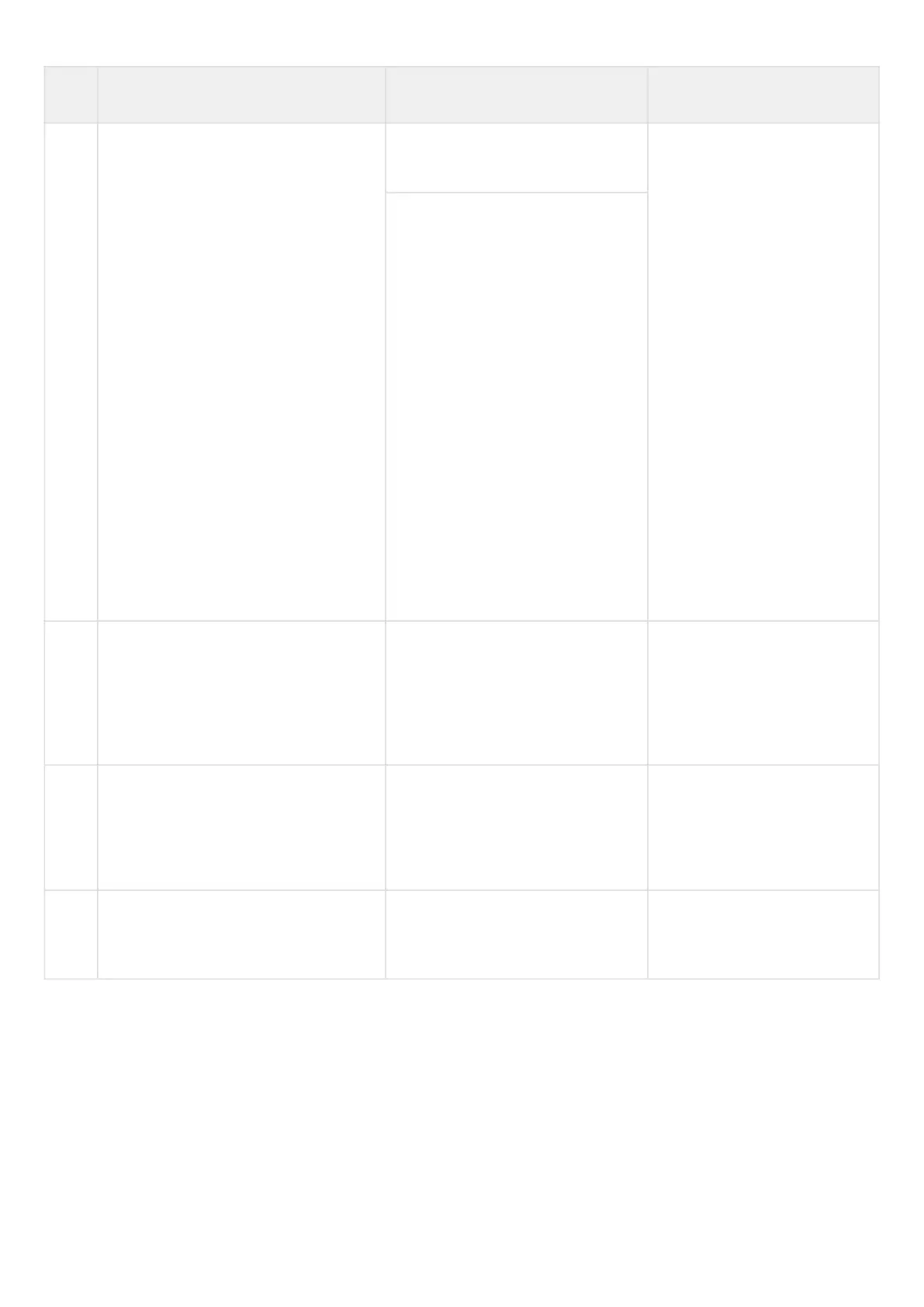ESR series service routers.ESR-Series. User manual
•
•
Step Description Command Keys
3 Set the capacity of routing tables in
configured VRF for IPv4/IPv6 (optional).
esr(config-vrf)# ip protocols
<PROTOCOL> max-routes <VALUE>
<PROTOCOL> – protocol type,
takes the following values:
ospf, bgp;
<VALUE> – amount of routes in
the routing table, takes values
in the range of:
OSPF
ESR-1000/1200/1500/1
511/1700/3100/3200 –
[1..500000],
ESR-20/21/30/100/200
– [1..300000],
ESR-10/12V(F)/14VF/15
– [1..30000]
BGP
ESR-1000/1200/1500/1
511/1700/3100/3200 –
[1..5000000],
ESR-20/21/30/100/200
– [1..2500000],
ESR-10/12V(F)/14VF/15
– [1..1000000].
Default value: 0.
esr(config-vrf)#ipv6 protocols
<PROTOCOL> max-routes <VALUE>
4 Enable and configure dynamic traffic
routing protocols (Static/OSPF/BGP/IS-
IS) in VRF instance (optional). See the
related sections: Static routes
configuration, OSPF configuration, and
BGP configuration.
5 In the configuration mode of physical/
logical interface, tunnel, DNAT/SNAT
rule, DAS server or SNMPv3 user,
specify the name of VRF instance for
which the mode will be used (optional).
esr(config-snat-ruleset)# ip vrf
forwarding <VRF>
<VRF> – VRF instance name,
set by the string of up to 31
characters.
6 Configure LT tunnel to transmit traffic
to global mode or to other VRFs (if
required).
SeeLT tunnel configurationse
ction.
